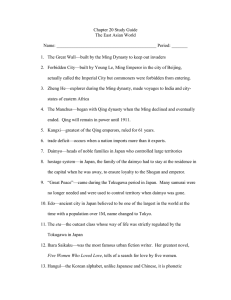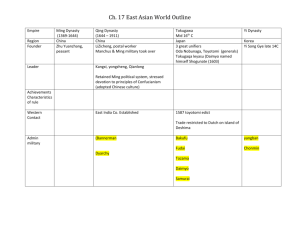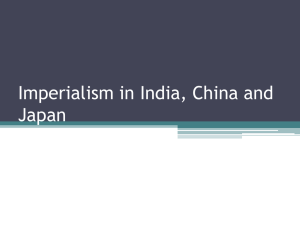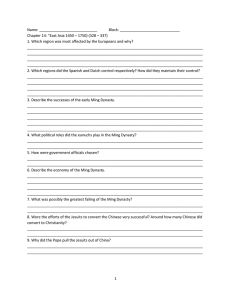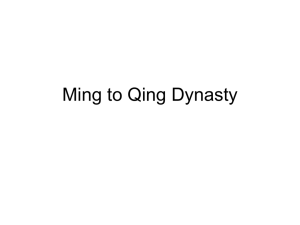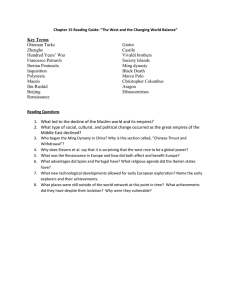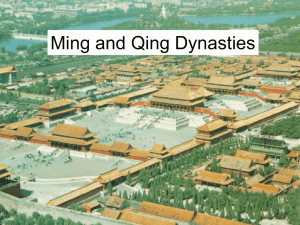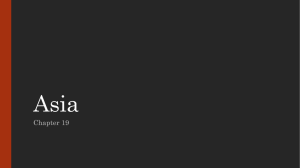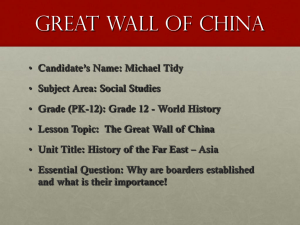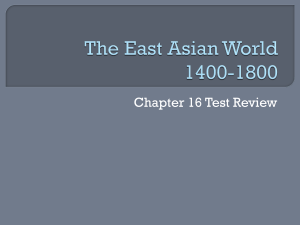Chapter 16 section 2 notes
advertisement
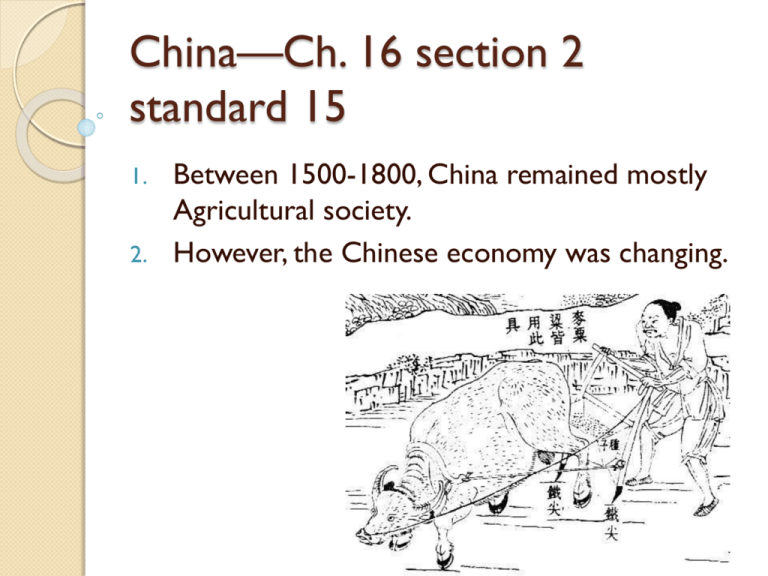
China—Ch. 16 section 2 standard 15 Between 1500-1800, China remained mostly Agricultural society. 2. However, the Chinese economy was changing. 1. 3. A long period of peace under the Qing dynasty and improvement in the food supply led to a large increase in population. 4. Despite the growth in trade and manufacturing, China did not develop the kind of commercial capitalism that was emerging in Europe. Qing dynasty 5. Chinese was organized around the family. 6. The ideal family unit in Qing china was the extended family, with as many as 2 or 4 generations living under the same roof. 7. Beyond the extended family was the clan, consisting of dozens or even hundreds of related families. 8. Women who had bound feet were more marriageable than those who did not. 9. A new form of literature , the novel, arose during the Ming dynasty. 10. The Golden Lotus depicts the corrupt life of a wealthy landlord in the late Ming period who cruelly manipulates those around him for sex, money, and power. 11. The Dream of Red Chamber, by Cao Xuegin, is generally considered even today to be China’s most distinguished popular novel. 12. The most outstanding example of Ming dynasty architecture is the Imperial City in Beijing. 13. The Imperial City includes a maze of private apartments and offices, as well as stately halls for Imperial audiences and banquets and spacious gardens. 14. Perhaps the most famous of all the arts of the Ming Era was blue and white porcelain. 15. Europeans admired the beauty of this porcelain and collected it in great quantities.
